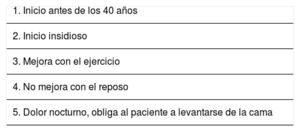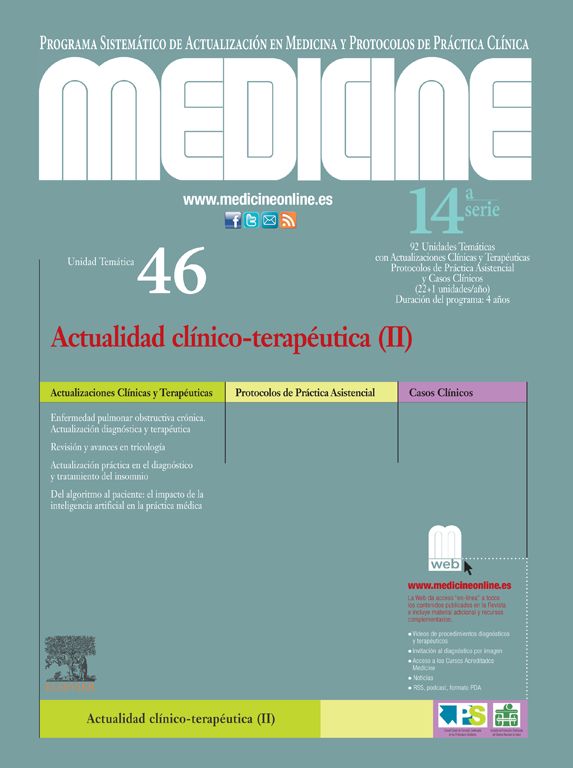Las espondiloartritis (EspA) afectan sobre todo al esqueleto axial y, en menor medida, a las articulaciones periféricas. La espondilitis anquilosante (EA) es el prototipo, caracterizado por la tendencia a anquilosis de las articulaciones sacroilíacas y la columna vertebral. El diagnóstico y el tratamiento precoces son fundamentales para evitar complicaciones y la progresión de la enfermedad, así como para mantener una buena calidad de vida en los pacientes. En su patogenia se ven implicados factores genéticos como el HLA-B27, el microbioma intestinal, las interleuquinas proinflamatorias y el estrés mecánico. Clínicamente se caracteriza por dolor lumbar inflamatorio, entesitis, dactilitis y en ocasiones oligoartritis de miembros inferiores. Puede ir acompañado de manifestaciones extraarticulares como uveítis, psoriasis o enfermedad inflamatoria intestinal. Aunque no disponemos de criterios diagnósticos validados, los criterios ASAS-EULAR permiten una clasificación precoz en distintas formas de EspA. Están basados en la presencia de afectación de articulaciones sacroilíacas, HLA-B27 y otras características asociadas a las EspA. El tratamiento debe contemplar medidas farmacológicas y no farmacológicas. Es importante el ejercicio físico y evitar el sobrepeso y el hábito tabáquico. El tratamiento farmacológico se debe ajustar al tipo de afectación e incluye el uso de AINE y terapias biológicas, fundamentalmente para las formas axiales.
Palabras clave
Spondyloarthritis (SpA) principally affects the axial skeleton and, to a lesser degree, the peripheral joints. Ankylosing spondylitis (AS) is the prototype, characterised by the tendency to present ankylosis of the sacroiliac joints and the spine. Early treatment and diagnosis are essential to prevent complications and disease progress, as well as to retain good quality of life for the patients. Its pathogenesis involves genetic factors such as HLA-B27, the gut microbiome, pro-inflammatory interleukins and mechanical stress. Clinically, it is characterised by inflammatory lower back pain, enthesitis, dactylitis and sometimes oligoarthritis in the lower limbs. It can be accompanied by extra-articular conditions such as uveitis, psoriasis or inflammatory bowel disease. Although no validated diagnostic criteria are available, the Assessments in Ankylosing Spondylitis/European League Against Rheumatism (ASAS/EULAR) criteria permit early classification into different forms of SpA. They are based on the presence of sacroiliac joint affectation, HLA-B27 and other characteristics associated with SpA. Treatment should include both drug and non-drug interventions. Physical exercise and avoiding overweight and smoking are of great importance. Drug treatment must be adjusted to the type of condition, and must include using NSAIDs and biological therapy, fundamentally for the axial forms.
Keywords
Identifíquese
¿Aún no es suscriptor de la revista?
Comprar el acceso al artículo
Comprando el artículo el pdf del mismo podrá ser descargado
Teléfono para incidencias
De lunes a viernes de 9h a 18h (GMT+1) excepto los meses de julio y agosto que será de 9 a 15h









